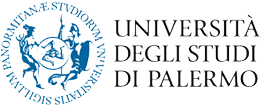What is a legal source?
This chapter explores the concept of legal sources from both a historical and juridical perspective. It examines the classification of legal sources, their transmission, and the role they play in shaping legal traditions.
The author emphasizes the dynamic interaction between law, legal literature, and the broader historical context in which legal texts were produced and interpreted.
Sources historiques et sources du droit (Historical Sources and Legal Sources)
The chapter begins by distinguishing between historical and legal sources. For historians, a source is any surviving testimony from the past that allows for historical reconstruction. These sources can be textual (manuscripts, inscriptions, archival documents) or material (artifacts, buildings).
For jurists, a legal source is a text that has legal authority, establishing or revealing norms that are in force. Despite these differences, historians and jurists share a methodological approach, as many documents studied by historians were originally produced for legal purposes. Archives primarily preserve records such as contracts, judicial decisions, and administrative acts, all of which reflect legal norms and practices.
La littérature juridique (Legal Literature)
Legal literature encompasses scholarly writings on law, including commentaries, treatises, and doctrinal analyses. Unlike legislative texts, these writings interpret, systematize, and expand upon existing legal sources.
The emergence of legal literature in the 12th century was linked to the rise of scholasticism, a method of study that emphasized authoritative texts and systematic reasoning. The rediscovery of Justinian’s Corpus iuris civilis played a crucial role in this development, providing a foundation for medieval legal scholarship. Legal texts became central to education, judicial practice, and governance, influencing the intellectual and political landscape of medieval Europe.
Genres d’ouvrages juridiques et communautés textuelles (Legal Text Genres and Textual Communities)
Medieval jurists produced various types of legal texts, including:
- Glosses: Annotations on authoritative legal texts.
- Summae: Systematic treatises summarizing specific legal topics.
- Ordines iudiciorum: Procedural manuals for courts.
- Quaestiones: Collections of hypothetical legal cases.
These texts were written for different audiences, including scholars, judges, notaries, and legal practitioners. The production and circulation of legal writings created a "textual community" of jurists who shared common references and methods.
A case study of Pillius de Medicina illustrates how legal scholars adapted legal doctrines to local needs. In Modena, Pillius developed the concept of dominium utile, a legal category that applied Roman law principles to feudal land tenure. His writings not only reflected but also shaped the socio-economic realities of his time.
Le droit comme système d’abstractions (Law as a System of Abstractions)
Medieval jurists did not merely interpret legal texts; they also constructed abstract legal concepts. They formulated general principles that could be applied to diverse legal situations. For example, the dominium utile doctrine allowed vassals to claim ownership-like rights over fiefs, integrating feudal and Roman legal traditions.
Legal reasoning relied on citation chains, linking different sources to build coherent arguments. This method reinforced the authority of legal scholarship and ensured continuity within the legal system.
La législation des nouveaux pouvoirs (Legislation of New Powers)
The rise of territorial states in the 12th and 13th centuries led to an expansion of legislative activity. Jurists played a key role in drafting laws for monarchies and municipalities, incorporating principles from legal literature into new statutory frameworks.
The famous maxim rex superiorem non recognoscens in regno suo est imperator ("The king who recognizes no superior in his kingdom is an emperor") reflects the growing autonomy of kings in legislating for their realms. This legal transformation, influenced by juristic doctrine, contributed to the emergence of centralized legal systems.
Les sources du droit en pratique (Legal Sources in Practice)
Understanding medieval law requires examining how legal norms were applied in daily life. Documents such as court records, notarial acts, and municipal statutes reveal the practical implementation of legal principles.
Legal documents were often shaped by procedural requirements. For example, trial records were formulated to anticipate potential legal challenges. Similarly, chronicles and historical narratives often served legal functions, documenting rights and privileges for future reference.
Historians studying legal sources must account for their juridical context, recognizing that such texts were crafted not merely to describe reality but to assert legal claims.
Conclusions
The chapter concludes by reaffirming the need to interpret legal sources within their historical and juridical contexts. While legal norms may persist across centuries, their meaning and application evolve with changing political and social conditions. The study of legal sources thus requires both a technical understanding of law and a broader appreciation of historical transformations.







